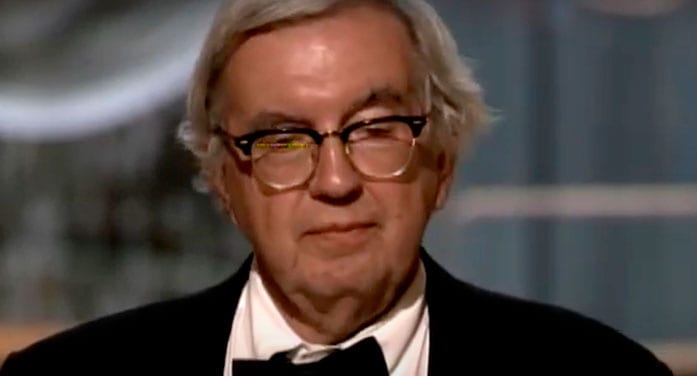 Larry McMurtry, who died recently aged 84, was an American writer and a prodigious worker.
Larry McMurtry, who died recently aged 84, was an American writer and a prodigious worker.
Beginning in 1961, he produced dozens of books, plus various screenplays for movies and television. Sometimes the screenplays were adaptations of his own literary output and sometimes they weren’t.
McMurtry was born in rural Texas in 1936. And while it was a milieu that informed much of his work, he was never sentimental or romantic about it. You might even say that he overcompensated the other way.
Here are three prime examples of his literary work being transferred to the screen:
Hud (1963)
The novel – McMurtry’s first – was actually called Horseman, Pass By. Published in 1961 and set in the Texas he grew up in, it wasn’t a big commercial success. But it got picked up for a movie.
There were modifications en route to the screen, including a rebalancing of the story to elevate the character of Hud Bannon, played by Paul Newman. Hence the title change.
The film’s narrative primarily revolves around the ongoing clash between Hud and his moral, albeit rigid, father. When the father accuses the son of lacking principles, the riposte is simple: “Don’t let that worry you none. You got enough for both of us.”
Newman – the film’s star and central character – can be described as an antihero. While undoubtedly charismatic, he’s also a nasty piece of work. And the decision to accentuate that element was deliberate. Neither Newman nor director Martin Ritt wanted to lighten the story’s tone or inject any sense of remorse.
Despite significant reservations on the part of the distributor, the film was a substantial critical and commercial success. And to the surprise of Newman and Ritt, younger audiences saw the main character as admirable.
Presumably some of that had to do with the iconic poster featuring a sexy, full-length image of Newman. Wearing jeans, he had one hand on a cocked hip while the other held a cigarette.
Ritt later suggested that this reaction was attributable to the changing values of the 1960s. If so, the era’s counterculture treasured attitudinal cool over idealism.
The Last Picture Show (1971)
When McMurtry’s 1966 novel was adapted into a 1971 movie, he got to collaborate on the screenplay. And given that the narrative was set in small-town early-1950s Texas, you might think of it as semi-autobiographical.
It’s a coming-of-age story, albeit not a sweet one. There’s too much sadness for that.
Still, it was a huge hit. The late critic Roger Ebert loved it: “The film is above all an evocation of mood. It is about a town with no reason to exist, and the people who live there.”
I first saw it on initial release and didn’t really care for it. Although it was one of those things you knew you were supposed to like, the picture it painted was too bleak for my taste.
But seeing it again recently, my reaction was completely different. Ebert was right.
Someone said “you never see the same movie twice,” meaning that your experience will be different the second time around. That’s certainly true if the viewings are over 40 years apart.
Lonesome Dove (1989)
Lonesome Dove’s genesis dates to the early 1970s when McMurtry and Peter Bogdanovich developed a film script with John Wayne, Jimmy Stewart and Henry Fonda in mind. Stewart and Fonda were game but – for various reasons – Wayne wasn’t. And without his participation, the project wouldn’t fly.
McMurtry subsequently reworked the idea, turning it into the 1985 novel Lonesome Dove. At more than 800 pages, it was a doorstopper. But that didn’t get in the way of success. Along with bestseller status, it won a Pulitzer Prize.
Set in the 1870s, Lonesome Dove is a story of two retired Texas Rangers taking a stolen cattle herd to Montana. That, though, is merely the narrative spine. Much happens in the process and, in typical McMurtry style, it’s gritty and unromantic.
Lonesome Dove came to the screen as a television miniseries rather than a theatrical film, which allowed time to give full rein to the absorbing story and its various subplots. Shown in four episodes over consecutive nights in February 1989, it was a huge ratings hit.
There’s much more to McMurtry than these three. But they’re a good place to start.
Troy Media columnist Pat Murphy casts a history buff’s eye at the goings-on in our world. Never cynical – well perhaps a little bit. For interview requests, click here.
The views, opinions and positions expressed by columnists and contributors are the authors’ alone. They do not inherently or expressly reflect the views, opinions and/or positions of our publication.


